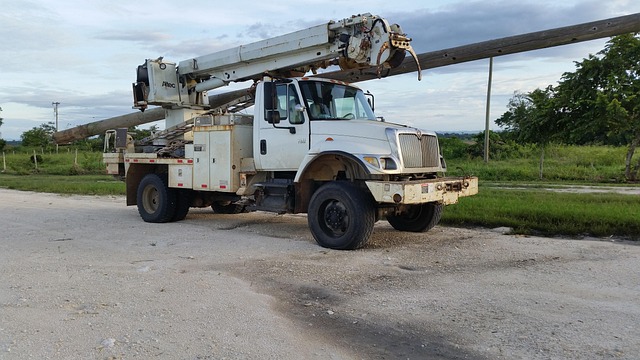Looking to register your car in California? This comprehensive guide walks you through the entire process, from understanding crucial requirements to finalizing your vehicle’s registration. We cover essential steps like gathering necessary documents, undergoing DMV VIN verification, completing applications, and paying fees. By following these straightforward instructions, you’ll have your California car registration taken care of in no time.
- Understand California Car Registration Requirements
- Gather Necessary Documents for Registration
- Visit Your Local DMV for Vehicle Inspection
- Complete Application and Pay Registration Fees
- Verify VIN and Finalize Car Registration
Understand California Car Registration Requirements

Before registering your car in California, it’s crucial to understand the state’s specific requirements for vehicle registration. The California Department of Motor Vehicles (DMV) mandates that all vehicles operating within the state be properly registered and have undergone a comprehensive inspection. This process involves verifying the Vehicle Identification Number (VIN) to ensure the vehicle’s authenticity and safety standards.
A key step in this process is the DMV’s VIN verification, which checks against national databases to confirm the car’s history and ensure it meets all necessary safety regulations. For added convenience, many residents opt for a mobile vin inspection or verification service, allowing them to complete the registration process more efficiently. This approach streamlines the registration journey, making it accessible and hassle-free for California drivers.
Gather Necessary Documents for Registration

Before heading to the California Department of Motor Vehicles (DMV) to register your car, ensure you have all the required documents in order. The process typically involves presenting proof of ownership, which can be a vehicle registration from another state or country, a bill of sale, or a manufacturer’s certificate of origin. Additionally, you’ll need a valid driver’s license and proof of insurance.
One crucial step is to undergo a DMV vin verification, where the unique identification number (VIN) of your vehicle is checked against national databases to ensure its authenticity and history. You can facilitate this process with a mobile vin inspection, making it more convenient than ever before. Having these documents prepared will significantly streamline the car registration procedure at the DMV.
Visit Your Local DMV for Vehicle Inspection

After gathering all necessary documents, the next step in registering your car in California involves visiting your local Department of Motor Vehicles (DMV) for a vehicle inspection. This crucial process ensures that your car meets safety and emission standards set by the state. The DMV will verify the Vehicle Identification Number (VIN) to ensure the vehicle’s authenticity and history. A mobile vin verifier or mobile vin verification can streamline this step, allowing you to complete the inspection process quickly without the need for an in-person visit.
During the inspection, a trained DMV officer will examine your car’s key components, including the lights, brakes, tires, and emissions system. They’ll also cross-reference the VIN with national databases to check for any outstanding issues or recalls. This thorough vin inspection is essential to ensure your vehicle is safe for California’s roads and to complete the registration process successfully.
Complete Application and Pay Registration Fees

To register your car in California, begin by completing the Application for Title and Registration (DMV Form 700). This form requires detailed information about your vehicle, including its make, model, year, and unique Vehicle Identification Number (VIN). Accurately filling out this section is crucial as it facilitates the dmv vin verification process, ensuring that your car meets all legal standards.
Once you’ve filled out the application, you’ll need to pay the registration fees. California’s Department of Motor Vehicles (DMV) outlines these fees on their website. You can typically make payments online or at a nearby DMV office using various payment methods. After successfully completing these steps, including the essential vin inspection, you’re one step closer to officially registering your vehicle in the Golden State.
Verify VIN and Finalize Car Registration

After gathering all necessary documents, the next step in registering your car in California is to verify the Vehicle Identification Number (VIN). This critical process ensures that the vehicle matches the details provided on the registration application. You can perform a DMV VIN verification using official channels or even a mobile vin verifier for convenience. Inputting the VIN into the appropriate system allows the California Department of Motor Vehicles (DMV) to cross-reference and validate the vehicle’s history, including any previous ownership, accidents, or outstanding issues.
Once the VIN inspection is successfully completed, you can finalize the car registration process. This involves submitting your application along with all required documents and fees to the DMV. They will then issue a registration certificate, allowing you to legally operate your vehicle on California roads. Ensure that all information is accurate and up-to-date to avoid any future complications during subsequent registrations or VIN inspections.
Registering a car in California involves several straightforward steps, from understanding requirements to completing applications. By gathering necessary documents, undergoing vehicle inspection at your local DMV, and verifying your Vehicle Identification Number (VIN), you can ensure a smooth process. Remember to keep your registration up-to-date for legal compliance and hassle-free driving in the Golden State. Don’t forget to complete the dmv vin verification step for added security and peace of mind.
